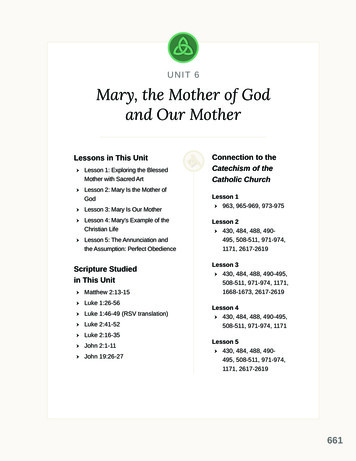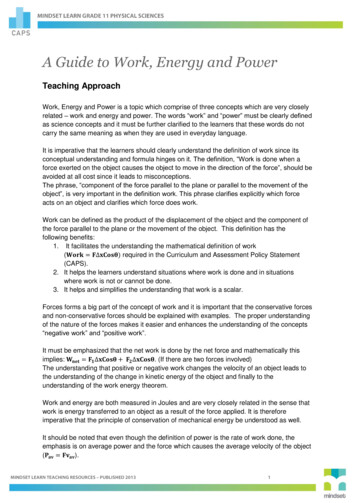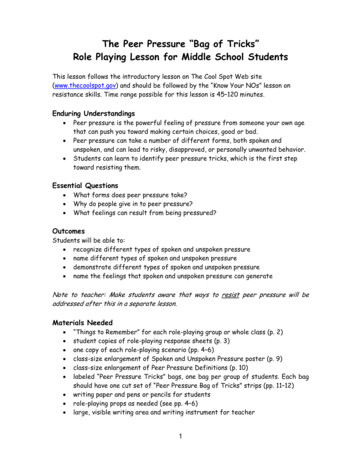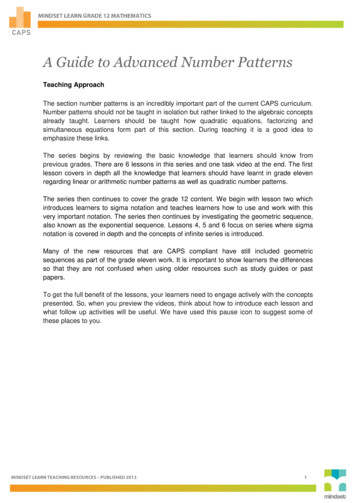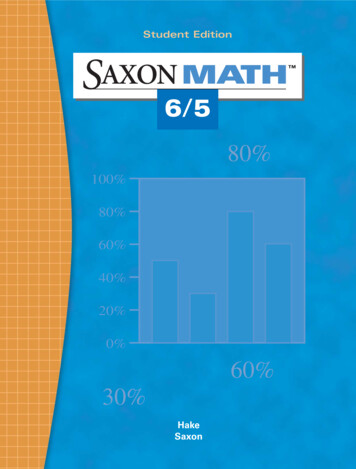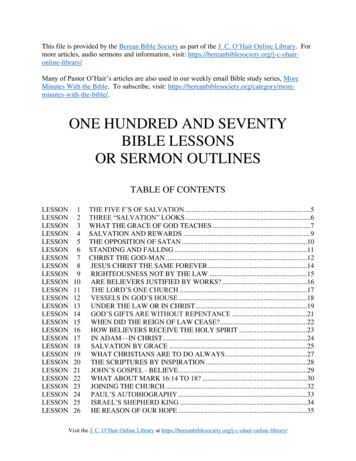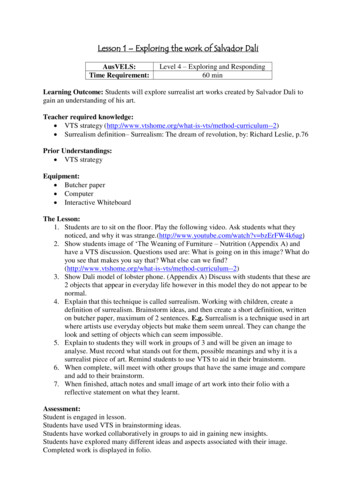
Transcription
Lesson 1 – Exploring the work of Salvador DaliAusVELS:Time Requirement:Level 4 – Exploring and Responding60 minLearning Outcome: Students will explore surrealist art works created by Salvador Dali togain an understanding of his art.Teacher required knowledge: VTS strategy lum--2) Surrealism definition– Surrealism: The dream of revolution, by: Richard Leslie, p.76Prior Understandings: VTS strategyEquipment: Butcher paper Computer Interactive WhiteboardThe Lesson:1. Students are to sit on the floor. Play the following video. Ask students what theynoticed, and why it was strange.(http://www.youtube.com/watch?v bzErFW4k6ag)2. Show students image of ‘The Weaning of Furniture – Nutrition (Appendix A) andhave a VTS discussion. Questions used are: What is going on in this image? What doyou see that makes you say that? What else can we rriculum--2)3. Show Dali model of lobster phone. (Appendix A) Discuss with students that these are2 objects that appear in everyday life however in this model they do not appear to benormal.4. Explain that this technique is called surrealism. Working with children, create adefinition of surrealism. Brainstorm ideas, and then create a short definition, writtenon butcher paper, maximum of 2 sentences. E.g. Surrealism is a technique used in artwhere artists use everyday objects but make them seem unreal. They can change thelook and setting of objects which can seem impossible.5. Explain to students they will work in groups of 3 and will be given an image toanalyse. Must record what stands out for them, possible meanings and why it is asurrealist piece of art. Remind students to use VTS to aid in their brainstorm.6. When complete, will meet with other groups that have the same image and compareand add to their brainstorm.7. When finished, attach notes and small image of art work into their folio with areflective statement on what they learnt.Assessment:Student is engaged in lesson.Students have used VTS in brainstorming ideas.Students have worked collaboratively in groups to aid in gaining new insights.Students have explored many different ideas and aspects associated with their image.Completed work is displayed in folio.
APPENDICESAppendix AFigure 1. Dali, S. (c. 1934). The weaning of furniture – nutrition. From Salvador Dali:Paintings, biography, quotes. Retrieved from tion.jsp.Figure 2. Dali, S. (c. 1936). Lobster Telephone. From National gallery of Australia. ogue/Detail.cfm?IRN 2607&ViewID 2&GalID ALL.
Appendix BFigure 3. Dali, S. (c. 1931). The persistence of memory. From Reality Bites. Retrieved 1/01/bite-45-salvador-dali-persistenceof 25.htmlFigure 4. Dali, S. (c. 1937). Sleep. From Art Liberty. Retrieved from http://freeart.at.ua/ bl/0/68399.jpg.Figure 5. Dali, S. (c. 1934) Enigmatic elements in the landscape. From Royal Oil Painting.Retrieved from .html
Appendix C
REFERENCESFigure 1. Dali, S. (c. 1934). The weaning of furniture – nutrition. From Salvador Dali:Paintings, biography, quotes. Retrieved from tion.jsp.Figure 2. Dali, S. (c. 1936). Lobster Telephone. From National gallery of Australia. ogue/Detail.cfm?IRN 2607&ViewID 2&GalID ALL.Figure 3. Dali, S. (c. 1931). The persistence of memory. From Reality Bites. Retrieved 1/01/bite-45-salvador-dali-persistenceof 25.htmlFigure 4. Dali, S. (c. 1937). Sleep. From Art Liberty. Retrieved from http://freeart.at.ua/ bl/0/68399.jpg.Figure 5. Dali, S. (c. 1934) Enigmatic elements in the landscape. From Royal Oil Painting.Retrieved from .htmlJohnson, D. B. (2012). Margitte’s Un-Brella [Video file] Retrieved fromhttp://www.youtube.com/watch?v bzErFW4k6ag.Leslie, R. (1997). Surrealism: The dream of revolution. New York: Todtri ProductionsLimited.Visual Thinking Strategies. (2013). Method & Curriculum [Web page]. Retrieved iculum--2.
Lesson 1 – Exploring the work of Salvador Dali AusVELS: Level 4 – Exploring and Responding Time Requirement: 60 min Learning Outcome: Students will explore surrealist art works created by Salvador Dali to gain



